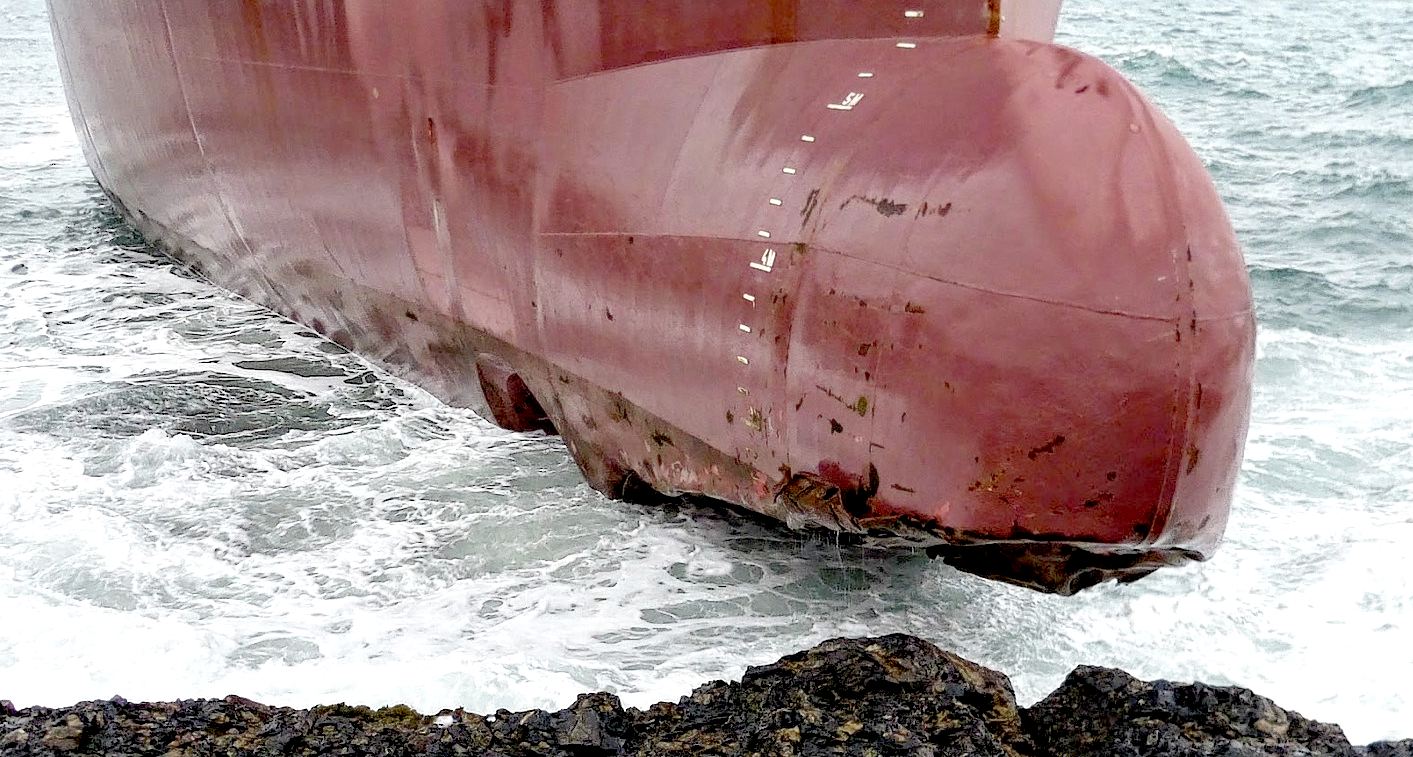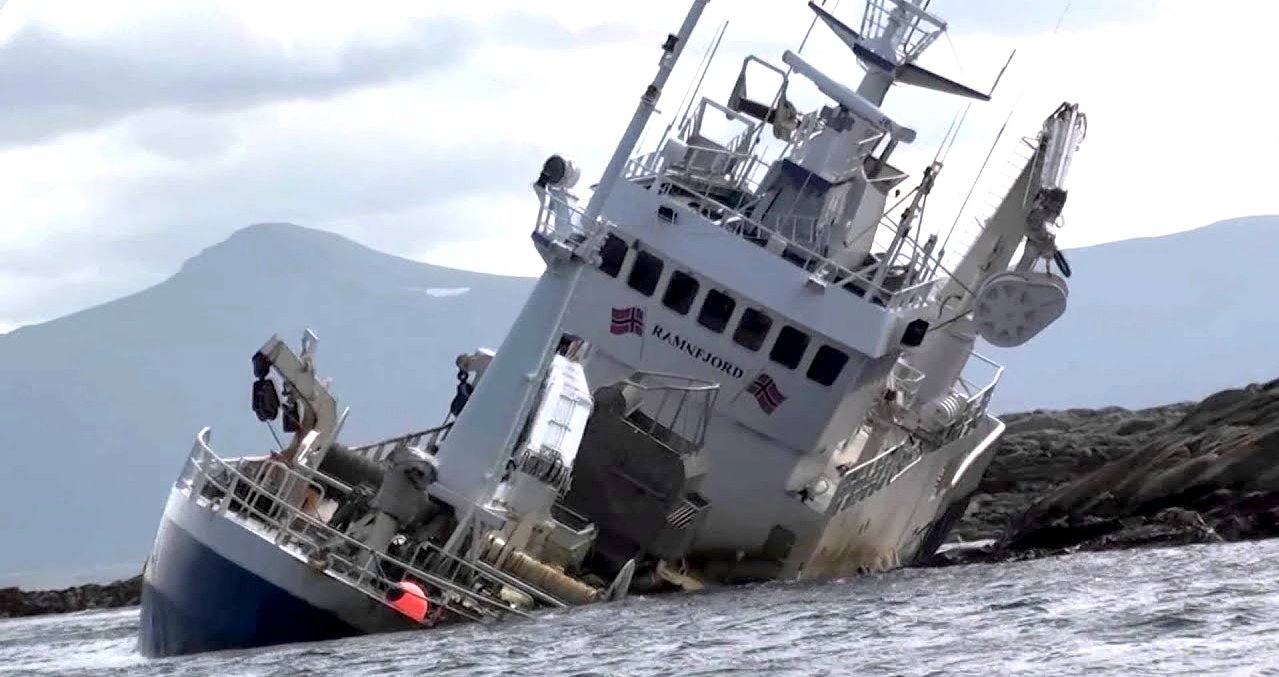
COLREGS
- The Rules are divided into five parts A-E - General Rules (A), Steering and Sailing (B), Lights and Shapes (C), Sound and Light (D) and Exemptions (E).
In 2013 Bluebird Marine Systems lobbied the
IMO, asking them if they
planned on changing the rules of the road for the oceans, in light of the
impending climate crisis and the importance of more efficient shipping.
A creative campaign at the time included an autonomous circumnavigation. The
IMO
(finally) responded, that they had no plans to change the rules to accommodate
unmanned waterborne vessels. On that basis, the specification for the
Elizabeth Swann was developed.
The
Cleaner Ocean
Foundation succeeded BMS in 2017, pursuing applications for EC
funding for SeaVax,
an autonomous workhorse that would rely on unmanned control. But (so
far) every application (three in number) for funding of mass water
filtration craft was turned down. This is/was a social enterprise with no
scope for commercialization where clean up operations are not
profitable.
The
UN have failed to prosecute the countries allowing the dumping of fishing
nets and plastic waste from rivers,
where it is the Country that is responsible for the actions of their
registered operators. BMS is now dissolved where administrative costs
were too high to maintain indefinitely without Government backing.
Whereas, military spending continues unabated. We think that says it
all.
OLD
HAT
The COLREGs were compiled in
1972, built on and derived from preceding Safety At Sea rules. Present
interpretation of the rules appears to us to be out of touch with robotic
and the possibility of solar powered ships, AI,
and the fact that unmanned vessels will outperform a human crew in terms
of persistent monitoring, any day of the week, month or year for that
matter - without food, toilets or sleep. All of this provided that
reliability is greater than we might reasonably expect from a biological
captain. A good example of progress is that experimental road vehicles, such as the
Google car have demonstrated that autonomous
electric vehicles are more reliable - on their way and inevitable.
Regardless
of the perceived lack of policing or advance guidance, as far as the Foundation is
concerned, any robotic ship that is well designed and capable of
operating with at least equal performance, but preferably with superior
reaction times, sight and hearing, fitted with an autonomous navigation system that is
at least as reliable as the best autopilots currently available, and capable
of interacting with its environment with equal or superior clarity to a
human counterpart, would comply with COLREGs,
even as they stand. The duty to field a qualifying vessel rests with the operators/owners of the vessel.
Hence, don't let the unmanned side down by using inferior equipment. This
falls to be considered more under construction and use regulations - and
certification. There is though no legal requirement to carry insurance.
That
said, we believe that the Elizabeth
Swann is compliance ready - the first ship in the world to be able to
(substantially) claim to be so.
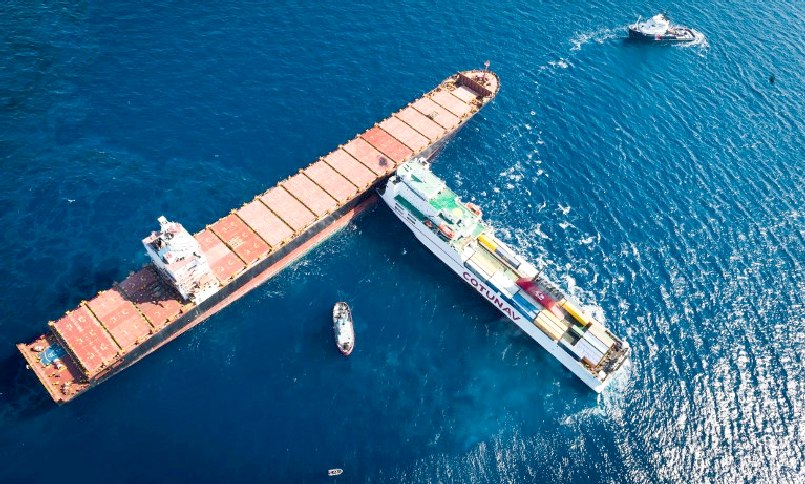
TECHNICAL PROVISIONS
The COLREGs include 41 rules divided into six sections: Part A - General; Part B - Steering and Sailing; Part C - Lights and Shapes; Part D - Sound and Light signals; Part E - Exemptions; and Part F - Verification of compliance with the provisions of the Convention. There are also four Annexes containing technical requirements concerning lights and shapes and their positioning; sound signalling appliances; additional signals for fishing vessels when operating in close proximity, and international distress signals.
THESE
ARE THE REGULATIONS:
Part A - General (Rules 1-3)
Rule 1 states that the rules apply to all vessels upon the high seas and all waters connected to the high seas and navigable by seagoing vessels.
Rule 2 covers the responsibility of the master, owner and crew to comply with the rules.
Rule 3 includes definitions of water craft.
Part B- Steering and Sailing (Rules 4-19)
Section 1 - Conduct of vessels in any condition of visibility (Rules 4-10)
Rule 4 says the section applies in any condition of visibility.
Rule 5 requires that "every vessel shall at all times maintain a proper look-out by sight and hearing.
Rule 6 deals with safe speed.
Rule 7 covering risk of collision, which warns that "assumptions shall not be made on the basis of scanty information, especially scanty radar
information."
Rule 8 covers action to be taken to avoid collision.
Rule 9
vessels proceeding in narrow channels should keep to starboard.
Rule 10 of the Regulations deals with the behaviour of vessels in or near traffic separation schemes.
Ships crossing traffic lanes are required to do so "as nearly as practicable at right angles to the general direction of traffic flow."
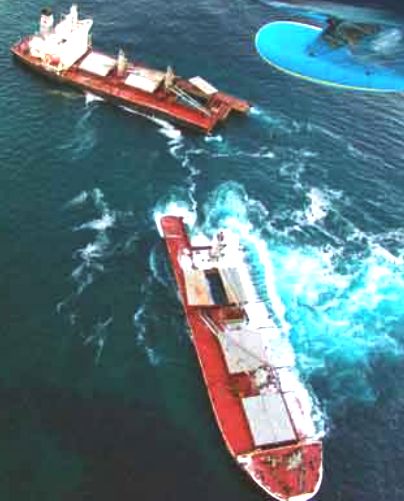
Section II - Conduct of vessels in sight of one another (Rules 11-18)
Rule 11 says the section applies to vessels in sight of one another.
Rule 12 states action to be taken when two sailing vessels are approaching one another.
Rule 13 covers overtaking - the overtaking vessel should keep out of the way of the vessel being overtaken.
Rule 14 deals with head-on situations. Crossing situations are covered by Rule 15 and action to be taken by the give-way vessel is laid down in Rule 16.
Rule 17 deals with the action of the stand-on vessel, including the provision that the stand-on vessel may "take action to avoid collision by her manoeuvre alone as soon as it becomes apparent to her that the vessel required to keep out of the way is not taking appropriate action.
Rule 18 deals with responsibilities between vessels and includes requirements for vessels which shall keep out of the way of others.
Section III - conduct of vessels in restricted visibility (Rule 19)
Rule 19 states every vessel should proceed at a safe speed adapted to prevailing circumstances and restricted visibility. A vessel detecting by radar another vessel should determine if there is risk of collision and if so take avoiding action. A vessel hearing fog signal of another vessel should reduce speed to a minimum.
Part C Lights and Shapes (Rules 20-31)
Rule 20 states rules concerning lights apply from sunset to
sunrise.
Rule 21 gives definitions.
Rule 22 covers visibility of lights - indicating that lights should be visible at minimum ranges (in nautical miles) determined according to the type of vessel.
Rule 23 covers lights to be carried by power-driven vessels underway.
Rule 24 covers lights for vessels towing and pushing.
Rule 25 covers light requirements for sailing vessels underway and vessels under oars.
Rule 26 covers light requirements for fishing vessels.
Rule 27 covers light requirements for vessels not under command or restricted in their ability to manoeuvre.
Rule 28 covers light requirements for vessels constrained by their draught.
Rule 29 covers light requirements for pilot vessels.
Rule 30 covers light requirements for vessels anchored and aground.
Rule 31 covers light requirements for seaplanes
Part D - Sound and Light Signals (Rules
32-37)
Rule 32 gives definitions of whistle, short blast, and prolonged blast.
Rule 33 says vessels 12 metres or more in length should carry a whistle and a bell and vessels 100 metres or more in length should carry in addition a gong.
Rule 34 covers manoeuvring and warning signals, using whistle or lights.
Rule 35 covers sound signals to be used in restricted visibility.
Rule 36 covers signals to be used to attract attention.
Rule 37 covers distress signals.
Part E - Exemptions (Rule
38)
Rule 38 says ships which comply with the 1960 Collision Regulations and were built or already under construction when the 1972 Collision Regulations entered into force may be exempted from some requirements for light and sound signals for specified periods.
Part F - Verification of compliance with the provisions of the Convention
(Rules 39
- 41)
The Rules, adopted in 2013, bring in the requirements for compulsory audit of Parties to the Convention.
Rule 39 provides definitions.
Rule 40 says that Contracting Parties shall use the provisions of the Code for Implementation in the execution of their obligations and responsibilities contained in the present Convention.
Rule 41 on Verification of compliance says that every Contracting Party is subject to periodic audits by
the IMO.
ANNEXES
The COLREGs include four annexes:
Annex I - Positioning and technical details of lights and shapes
Annex II - Additional signals for fishing vessels fishing in close proximity
Annex III - Technical details of sounds signal appliances
Annex IV - Distress signals, which lists the signals indicating distress and need of assistance.
TOP
TEN REASONS FOR ACCIDENTS AT SEA
The health of the
blue economy is tied significantly to the safety of maritime
transportation. Taking steps to reduce the number of maritime accidents is beneficial
for the safety of human life and equipment and the prosperity of any nation’s
economy.
A Report by the
US's National Transport Safety Board (NTSB) in 2016 outlined the top ten reasons for accidents at sea:
1. Fatigue
The NTSB report indicates that fatigue is one of the most common reasons for transportation accidents, and reducing this cause is a top priority. Mariners should be aware of how sleep loss affects their performance and should refrain from accepting a watch while in a state of fatigue that renders them unfit for duty. In such instances, mariners should prearrange for another qualified individual, i.e. a
watch-stander, to serve in their place when possible. If this is not possible, mariners should refuse duty until they are adequately rested and able to safely execute their responsibilities.
2. Standard Maintenance and Repair Procedures
Very often accidents are simply caused by the failure of one or more individuals to operate according to standardized procedures involving testing, repair and maintenance of equipment. Individuals conducting these procedures must use the correct parts and tools and also ensure system integrity and safe equipment operations according to the appropriate specifications.
3. Use of Medication While Operating Vessels
Using medication in an unsafe manner as a member of a maritime crew can have disastrous results. Mariners should consult with an appropriate medical professional prior to using any type of medication, whether over-the-counter or prescribed. Also, the use of certain medications by credentialed mariners may disqualify them from operating a vessel, including alcohol abuse.
4. Operational Testing Procedures
Standardized procedures should always be used when testing equipment. Optimally, the testing should be performed at normal operating pressures and loads – this can help verify the reliability and quality of the repair or maintenance work performed. All sensors and alarms within vessels should be tested routinely to verify the reliability of their operation and their capability of providing adequate warning to crew members.
5. Familiarization with Local Recommendations
It’s important for vessel operators to have familiarity with and heed the recommendations of local specialists in the maritime industry as well as pertinent publications, including the United States Coast Pilot and others. Failure to do so may result in unnecessary accidents.
6. Underestimating Strong Currents
Mariners can face significant challenges when operating in high water with currents that are more powerful than normal. Under such conditions, the ability to maneuver may be diminished significantly and the risk of parting lines or dragging anchor may be increased. It’s vital for operators and owners to encourage their mariners to properly assess dangers, and remain aware of prevailing conditions. As well, they must take into consideration the guidance of authoritative entities such as the Coast Guard – and from this information takes steps to minimize risks. In particular, the “downstreaming” maneuver often performed by inland towers is risky when strong currents are present.
7. Bridge Resource Management
When pilots are faced with limited reaction times and hazards are close at hand, it’s important to have all possible resources available for use in order to help ensure the safe operation of vessels, including human resources and equipment. The utilization of these resources falls under Bridge Resource Management.
8. Proper Safety Equipment
It’s vital that owners, operators and crewmembers of a vessel do their part to ensure the proper maintenance and functioning of safety equipment on the vessel. As well, they should ensure the vessel is equipped with the necessary safety equipment to handle emergencies and provide the best chance of survival for all on board.
9. Distractions
A very high priority as it concerns safety improvements involves the minimization of distractions. Although it is necessary for operators to communicate with dispatchers and crewmembers as well as conduct other work duties involving the checking of equipment and instruments, anything that hinders proper vessel operation can result in tragic outcomes.
10. Access to High Risk Spaces
The importance of high risk spaces, in particular those with hull penetrations, remaining freely accessible. If these spaces are blocked, a safety hazard exists and operators may be hindered from responding to flooding and other types of emergencies when and if they occur.
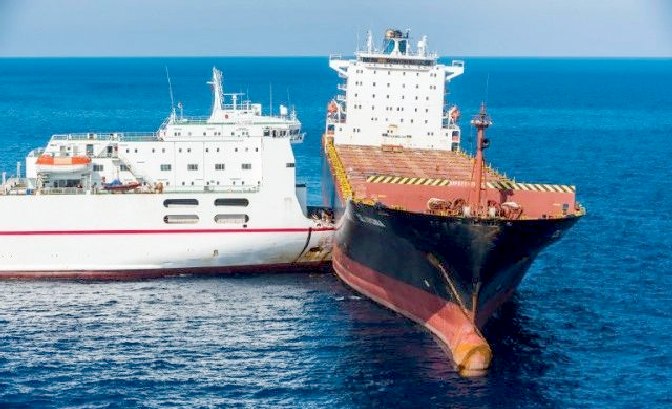
How
did this happen? The answer is that they did not have autonomous
navigation aids onboard. They relied on humans.

International Maritime Organization
(IMO)
4 Albert Embankment, London SE1
7SR
United Kingdom
+44 (0) 20 7735 7611
LINKS
& REFERENCE
http://www.solarnavigator.net/boats/collision_at_sea_regulations_colregs.htm
https://www.bluebird-electric.net/COLREGS_International_Regulations_for_Preventing_Collisions_at_Sea_1972.htm
http://www.solarnavigator.net/boats/collision_at_sea_regulations_colregs.htm
https://www.bluebird-electric.net/COLREGS_International_Regulations_for_Preventing_Collisions_at_Sea_1972.htm
